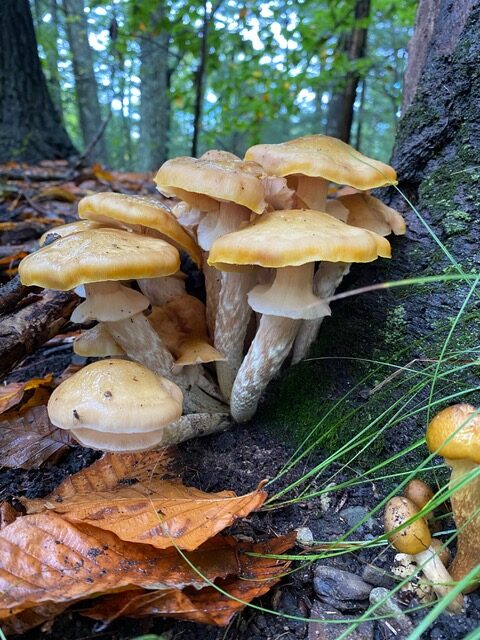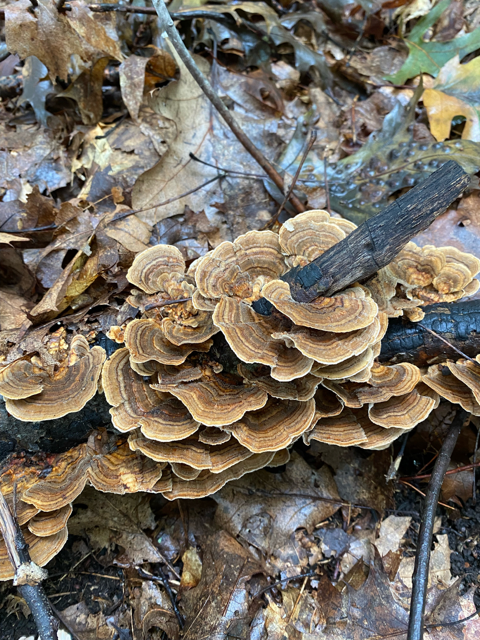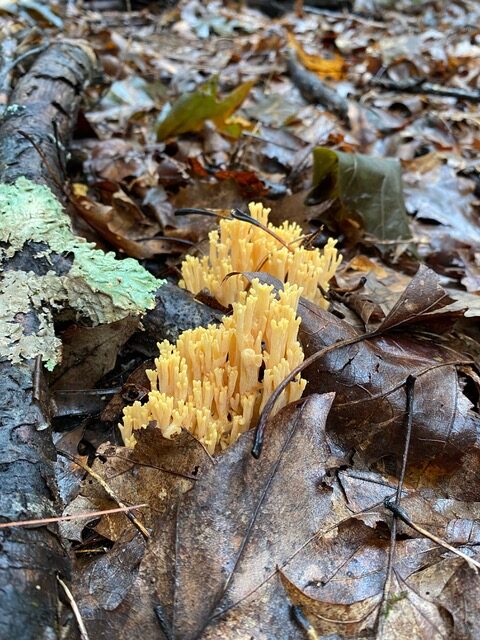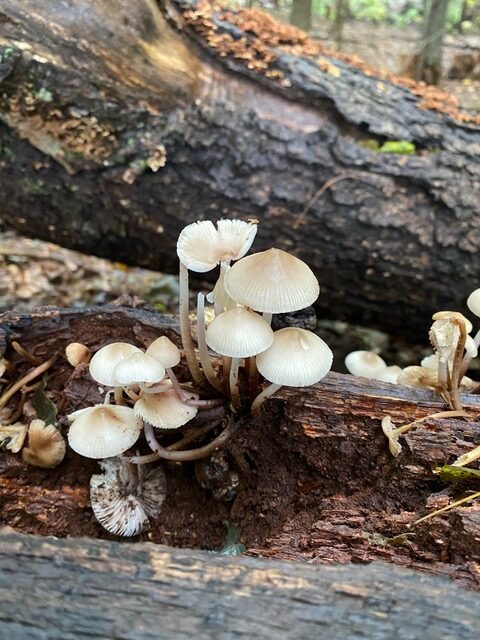Scouting for mushrooms

Physalacriacaeae fungi family

Polyporaceae fungi family or shelf fungus

Gomphaceae fungi family or Coral fungi

Mycenaceae fungi family or Bonnet mushroom
On October 5th my mentors and I went on a walk through the Purdon Reservation after a rainy day. On the walk, we were able to find many different types of mushrooms. It is most common to find fungi after rainstorms because of the increase in moisture in the environment. Fungi need an abundant amount of moisture to be able to grow their best. The picture of the mushroom on the top left is in the Physalacriacaeae family of fungi while the picture on the top right is in the Polyporaceae fungi family also known as shelf fungus. We found many other types of mushrooms on the trails. These are the two I found most fascinating. I like how the Physalacriaceae mushroom looks like there is another mushroom cap underneath the real mushroom cap. The stems of these mushrooms also have a cool pattern that is unique compared to the other fungi we saw. In the photo on the top right of the shelf fungus, I like how the mushrooms look like seashells you can find on the beach. They have an interesting pattern and a pretty brown and orange color range. The mushrooms on the bottom left are part of the Gomphaceae fungi family. This type of fungi is also known as coral fungi. I think the name coral fits perfectly with this mushroom because it looks like coral from the ocean which I love. In the bottom right are part of the Mycenaceae fungi family also known as the Bonnet mushroom. I used my PictureThis app to find out information on these fungi. If you find these mushrooms as captivating as I do, you should try to go out and look for mushrooms on your next forage through the AVIS trails. If you would like to find out more information on fungi or other plants on the reservations give PictureThis a try. Make sure to not eat any mushrooms you see!
There are mushrooms all year round, like the shelf fungus. As the ground thaws, you will start to find more mushrooms starting to appear. Since the weather is getting warmer you can start to look for turkey-tail mushrooms, which can be found around fallen trees. Another mushroom to look for are oyster mushrooms. You can also find morel mushrooms around the edge of wooded areas and around trees, like oak, elm, ash, and aspen trees.
Here is another link to Mass Audubon from a blog posted in 2018 talking about mushrooms. don’t advise taking mushrooms while on your walks. Again, you should also not eat any of the mushrooms you find.